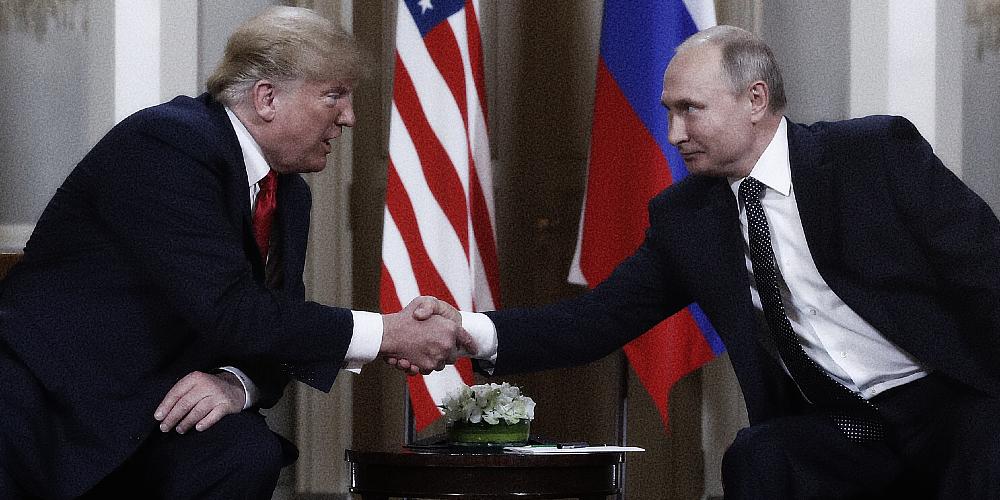In discussions about global geopolitics, few topics stir as much interest as the ongoing tensions between Russia and Ukraine. The prospect of a future deal involving the United States, specifically influenced by a figure like Donald Trump, adds another layer of complexity to the situation. What could such a deal entail? Commentator Victor Davis Hanson explores the possible outlines of an agreement, based on recent discussions and observations.
Russia’s Perspective: Selling the War to Its People
Vladimir Putin has consistently shaped narratives to justify Russia’s actions in Ukraine. For any agreement to resonate domestically, Putin must present it as a win for Russia. This could involve highlighting two key points:
- Crimea’s Permanent Status
Putin might argue that his decision to go to war ensured Russia’s hold over Crimea “forever.” He could reference Crimea’s historical ties to Russia dating back to 1787, emphasizing that it was only detached due to what he might call “a mistake” by Soviet leader Nikita Khrushchev. The rhetoric would likely frame Crimea’s status as a restoration of Russia’s rightful territory. - Blocking Ukraine’s NATO Membership
Another point of emphasis for Putin could be preventing Ukraine’s integration into NATO. The Kremlin has long viewed NATO expansion as a security threat. For Russian audiences, this could be framed as a major geopolitical victory, ensuring Ukraine remains outside the military alliance.
Ukraine’s Position: Seeking Security and Sovereignty
For Ukraine, any deal must yield tangible benefits, especially after enduring months of destruction and warfare. A possible agreement might involve a few key promises to the Ukrainian government and people:
- Access to the European Union
While NATO membership could remain off the table, Ukraine might be offered a path to join the European Union. This integration into Europe could provide economic and political support, helping Ukraine rebuild and align closer with the West. - Demilitarized Zones
To limit future conflicts, the deal could include the establishment of demilitarized zones along certain contested areas. This might help reduce tensions and create a buffer between Russian and Ukrainian forces. - Enhanced Military Support
As part of the agreement, Western allies, including the United States, might commit to arming Ukraine significantly. This would enable the country to protect its sovereignty more effectively in the future.
What Might the Agreement Look Like in Practice?
The contours of such a deal may result in a mix of concessions and guarantees. Some potential outcomes include:
- Russia’s Withdrawal to Pre-2022 Positions
Part of the agreement could require Russian forces to retreat to the positions they held before February 24, 2022, the day the war escalated. However, this would leave contested areas like Crimea firmly under Russian control. - Commitments to Peace
Both sides might agree on a long-term peace framework to avoid future conflicts. This could involve international monitoring and guarantees from powerful nations to uphold the deal. - Adjusting Alliances
Ukraine’s path to NATO could remain blocked, but its integration with the European Union might accelerate. This would allow Ukraine to gain economic benefits while potentially scaling back military ambitions.
The Role of the United States
A U.S.-brokered deal, especially under Donald Trump, could come with unique dynamics. Trump has previously emphasized reducing America’s involvement in foreign wars while negotiating deals he views as beneficial to all sides. His approach might focus on finding practical compromises while minimizing new military commitments for the U.S.
Trump is also likely to position himself as a peacemaker. Preventing further NATO expansion and balancing relations with Russia would likely be part of his strategy. If he’s involved in brokering a deal, it could reflect his broader foreign policy stance of prioritizing negotiation over confrontation.
Challenges in Reaching a Resolution
While such a deal might appear feasible on paper, implementing it in reality remains complex. Both sides have deeply entrenched interests, and public opinion in Ukraine, Russia, and the West will heavily influence the outcome. Additionally, reconciling the desires of multiple stakeholders—some seeking justice and others stability—adds to the difficulties.
Final Thoughts
The potential for a negotiated resolution to the Russia-Ukraine war remains a subject of intense speculation. A deal involving Crimea, NATO membership, and enhanced support for Ukraine seems possible, but nothing is guaranteed. Leaders on all sides would need to navigate political, military, and public pressure to make such an agreement work.
As the global community watches closely, one thing is clear: any resolution will have lasting consequences on the regional and global order. Whether Trump plays a role in brokering this peace is yet to be seen, but the idea of a deal shaped by his unique approach to diplomacy is undoubtedly intriguing.
Video Summary generated with assistance from AI.
What Would You Do If Pharmacies Couldn’t Provide You With Crucial Medications or Antibiotics?
The medication supply chain from China and India is more fragile than ever since Covid. The US is not equipped to handle our pharmaceutical needs. We’ve already seen shortages with antibiotics and other medications in recent months and pharmaceutical challenges are becoming more frequent today.
Our partners at Jase Medical offer a simple solution for Americans to be prepared in case things go south. Their “Jase Case” gives Americans emergency antibiotics they can store away while their “Jase Daily” offers a wide array of prescription drugs to treat the ailments most common to Americans.
They do this through a process that embraces medical freedom. Their secure online form allows board-certified physicians to prescribe the needed drugs. They are then delivered directly to the customer from their pharmacy network. The physicians are available to answer treatment related questions.



